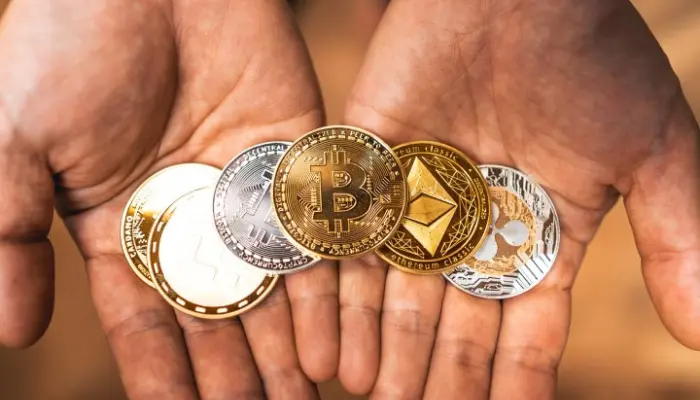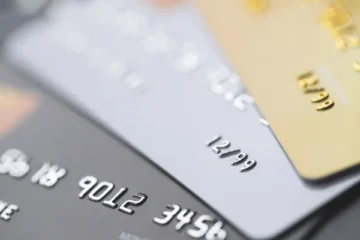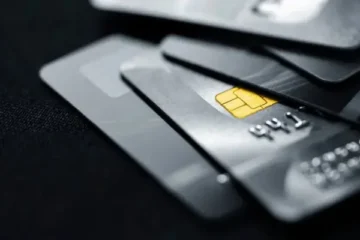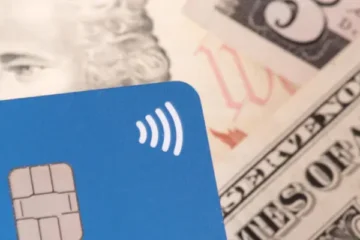How do cryptocurrencies work?
You’ve probably heard about Bitcoin, Ethereum, or “digital coins” in general — but let’s be honest: most people still don’t really understand how they work.
Advertisement
And that’s totally normal. Cryptocurrencies sound like some tech wizard stuff, but the truth is, it’s not that hard once someone explains it in plain English.
Advertisement
So if you’re tired of nodding and pretending you get it — this is your no-nonsense guide. Let’s break down everything about how cryptocurrencies work, in the simplest way possible.
What Are Cryptocurrencies?
Cryptocurrencies are basically digital money. But different from the cash in your wallet or your bank account, they don’t belong to any government, bank, or company. They live online, and they’re built to work without middlemen.
Advertisement
Imagine sending money to someone across the world in just minutes — no bank fees, no waiting, no paperwork. That’s the idea behind crypto.
How Did Cryptocurrencies Start?

Everything kicked off in 2008, during the huge financial crisis in the U.S. At that time, someone (or maybe a group) using the name Satoshi Nakamoto released a whitepaper introducing Bitcoin.
The goal? Create a money system that doesn’t rely on banks — something that works directly from person to person, like cash, but online.
And just like that, Bitcoin was born — opening the door for a whole new way to think about money.
What Is Blockchain and Why Does It Matter?
Now, don’t freak out. This part sounds techy, but it’s easy to get.
Blockchain is like a digital notebook that keeps track of everything that happens with cryptocurrencies. Every time someone sends or receives crypto, the transaction gets recorded in this notebook.
But instead of being locked in one place like a bank, this notebook is copied and shared across tons of computers around the world. So nobody can cheat, edit, or delete anything without everyone noticing.
That’s what makes blockchain super safe and reliable — and the reason crypto works in the first place.
How Does a Cryptocurrency Transaction Work?
If you’ve ever sent money through a bank, PayPal, or a cash app, you know how it usually works — you type in someone’s info, wait for approval, and sometimes get hit with fees or delays. With crypto, the process is different… but in a good way. It’s fast, direct, and cuts out all the middlemen.
A lot of people think sending crypto is super technical or something only “computer geeks” can do. But once you get past the weird-looking wallet addresses and fancy terms, it’s actually way more straightforward than you’d expect.
Basically, all you need is a crypto wallet, an internet connection, and the wallet address of the person you want to send money to. No banks, no paperwork, and most of the time — no waiting around.
Here’s how a typical crypto transaction works, step by step:
- Get a digital wallet
This is like a regular wallet, but for your crypto. It can be an app on your phone or software on your computer — and it’s where you keep and manage your coins. - Make sure the other person has a wallet too
Just like you need a wallet to send, the person receiving your crypto needs one to get it. - Grab their wallet address
This is a unique code made up of letters and numbers. Think of it like their crypto “email address” — it tells the system where to send the money. - Open your wallet and start a transfer
Paste their wallet address into your app, type how much you want to send, and hit “send” or “confirm.” - Let the network do its thing
The crypto network checks to make sure everything’s in order — like if you really have the amount you’re trying to send. Once it’s verified, the transaction goes through. - Done — the money arrives fast
In most cases, the other person gets the crypto in just a few minutes. No banks, no paperwork, and barely any fees.
It’s fast, direct, and way less complicated than old-school transfers. Once you try it, you’ll see how smooth the process really is.
What Is Cryptocurrency Mining?
So where do cryptocurrencies like Bitcoin come from? They’re not printed like dollars — they’re created through a process called mining.
In crypto, mining means using computers to solve complex puzzles that help keep the network safe and running. When a computer solves one, the person behind it earns new coins as a reward.
It’s how new coins are created and how transactions get verified — all at the same time. Let’s take a quick look at how it works and the two main systems used:
- Proof of Work (PoW): older method (used by Bitcoin), needs a lot of computer power and electricity.
- Proof of Stake (PoS): newer and more eco-friendly (used by Ethereum now), doesn’t need all that energy.
Mining was easy back in the day, but now it’s a serious investment and not really something you do with a regular laptop.
What Are Cryptocurrencies Used For?
A lot of folks think crypto is just something people buy hoping to get rich overnight — like a digital lottery ticket. But the truth is, there’s way more to it than that.
Cryptocurrencies aren’t just made for trading and holding. Today, you can actually use them in real life — to shop, send money across borders, play games, earn passive income, and even join online projects and communities.
In short, crypto is becoming a new kind of tool — not just for investing, but for everyday use. Here are some of the main ways people are using it right now:
- Paying online (and some stores accept it too).
- Sending money overseas, fast and cheap.
- Buying NFTs and other digital stuff.
- Playing blockchain-based games or exploring the metaverse.
- Earning interest or lending coins in DeFi platforms.
- Using it like digital gold — just to store value.
So yeah, it’s way more than just a get-rich-quick scheme.
Most Popular Cryptocurrencies You Should Know
When people hear “crypto,” they usually think of Bitcoin — and yeah, it’s the original. But it’s far from the only one.
Over the years, thousands of new cryptocurrencies have popped up. Some are legit projects with real-world use. Others? Not so much. With over 20,000 coins floating around, it’s easy to get overwhelmed — or worse, fall for a scam.
To keep things simple, here are a few of the biggest and most trusted names in the crypto world that are actually worth knowing:
- Ethereum (ETH) – famous for smart contracts and DeFi apps.
- Binance Coin (BNB) – used on Binance, one of the largest crypto exchanges.
- Solana (SOL) – super fast and great for NFTs and DeFi.
- Ripple (XRP) – built for fast and cheap bank transfers.
- Cardano (ADA) – eco-friendly and backed by academic research.
There are over 20,000 coins out there, but only a handful really matter. Be careful where you put your money.
Is It Safe to Invest in Crypto?
When people hear about crypto, one of the first questions is always: “But is it safe?” And honestly, it depends.
The technology itself — blockchain — is very secure. It’s built to prevent fraud and tampering. The real danger? It’s usually human error. Scams, fake websites, shady projects, or just not knowing what you’re doing — that’s where most people get burned.
If you’re thinking about investing, here are a few simple ways to protect yourself:
- Stick to well-known and trusted exchanges like Coinbase, Kraken, or Binance US.
- Never share your private keys — that’s like giving someone your crypto password.
- Turn on two-factor authentication (2FA) to add an extra layer of protection.
- Ignore anything that sounds too good to be true — because it usually is.
And one last thing: crypto can swing hard — up one day, down the next. So only put in money you’re okay with losing. Treat it like a high-risk investment, not a guaranteed payday.
Where Can You Buy Cryptocurrencies?
Buying crypto might sound complicated at first, but it’s actually a lot like shopping online — you just need to know where to go and how to start.
Instead of walking into a bank or using an ATM, you’ll buy your coins through something called a crypto exchange — a website or app where you can trade dollars for digital coins. It’s fast, pretty straightforward, and most platforms are made to be user-friendly, even for beginners.
Here’s a quick step-by-step to help you get started:
- Pick a trusted exchange (like Coinbase, Kraken, or Binance US).
- Create an account and verify your identity.
- Add money using a bank account, card, or app like PayPal.
- Choose the crypto you want and click “Buy.”
After that, you can keep your coins on the exchange or move them to your own wallet.
How to Store Cryptocurrencies Safely?
So, you’ve bought some crypto — now what? You need a safe place to keep it. Just like you wouldn’t walk around with stacks of cash in your pocket, you shouldn’t leave your digital coins unprotected either.
That’s where crypto wallets come in. They’re tools that store your coins and give you control over your money. But not all wallets are the same — and picking the right one makes a big difference.
There are two main types:
- Hot Wallets: These are always online — like apps on your phone or desktop. They’re super convenient for quick access and everyday use. But since they’re connected to the internet, they’re more exposed to hacks and scams.
- Cold Wallets: These are offline wallets — like USB devices or paper backups. Since they’re not connected to the internet, they’re way more secure and perfect for long-term storage.
If you’re holding a large amount of crypto or planning to invest long-term, it’s smart to use a hardware wallet like Ledger or Trezor. It might cost a little upfront, but it keeps your coins safe from hackers — and gives you peace of mind.
How Are Cryptocurrencies Regulated Around the World?
Crypto might feel like the Wild West sometimes, but governments around the world are starting to step in and lay down the law. The tricky part? Each country is handling it in its own way.
Some places are welcoming and building rules to support innovation. Others are hitting the brakes hard, banning crypto altogether or making it super tough to use. And then there are countries still trying to figure out what to do.
Here’s a quick look at how different parts of the world are dealing with crypto regulation right now:
- U.S.: regulators like the SEC are watching closely, especially around crypto trading.
- Brazil: crypto is legal and must be declared in taxes.
- China: banned crypto mining and most trading.
- El Salvador: went all in and made Bitcoin legal tender.
- EU: working on laws for consumer safety and transparency.
So it really depends on where you live. But most governments are moving toward clearer rules.
Are Cryptocurrencies Legal in the U.S.?
Yep — cryptocurrencies are 100% legal in the United States. You can buy, sell, hold, and trade crypto without breaking any laws. But just because it’s legal doesn’t mean it’s a free-for-all.
There are rules you need to follow:
- The IRS wants its cut — If you make money with crypto (buy low, sell high), you need to report those gains on your taxes.
- Big transactions might trigger ID checks — Thanks to KYC (Know Your Customer) and AML (Anti-Money Laundering) laws, exchanges may ask for documents if you’re moving large amounts.
- Regulations can vary by state — Some places, like New York, have stricter rules and require extra licenses for crypto companies.
So yes, crypto is legal — but it’s not a “do whatever you want” situation. Play by the rules, and you’re good.
Pros and Cons of Cryptocurrencies
Let’s be honest — crypto isn’t perfect. It’s exciting, full of potential, and changing how we deal with money… but it also comes with risks. Like any new tech, it has its bright side and some pretty rough edges.
Here’s a breakdown of the good and the not-so-good:
Pros
- No banks, no middlemen
You’re in control. Send and receive money directly — no need for approval from a bank or third party. - Lower fees and faster transactions
Compared to traditional banks and wire transfers, crypto is often quicker and way cheaper — especially for international payments. - Secure and transparent system
The blockchain keeps everything public and verifiable. It’s nearly impossible to fake or reverse a transaction. - Open to everyone
As long as you have internet, you can use crypto — no credit checks, no bank account required. - Full ownership
Your crypto belongs to you. No one can freeze or seize it without your permission.
Cons
- High price swings
Crypto is volatile. One tweet or headline can send prices soaring — or crashing. It’s not for the faint of heart. - Scams and shady uses
Because of its anonymous nature, crypto is sometimes used for illegal stuff. Plus, there are tons of fake projects out there. - Can be confusing at first
Wallets, private keys, blockchains… there’s a learning curve, especially if you’re new to tech. - Losing access = losing your money
If you forget your private key or get hacked, there’s no “reset password” button. Your coins could be gone for good. - Environmental concerns
Some coins (like Bitcoin) use a lot of electricity to operate. The good news? Many newer cryptos are switching to eco-friendly systems.
What Is DeFi (Decentralized Finance)?
Think of DeFi as a way to use financial services — like borrowing, lending, or trading — but without banks, paperwork, or long approval times. It’s short for Decentralized Finance, and it runs entirely on blockchain technology.
Instead of relying on traditional institutions, DeFi uses smart contracts — bits of code that automatically handle things like interest rates, payments, and agreements. Everything is open, fast, and fully under your control.
Here are some of the most popular things you can do with DeFi:
- Borrow money without credit checks.
- Lend your crypto and earn passive income.
- Trade coins directly on decentralized exchanges (DEXs).
- Join liquidity pools and earn rewards.
Everything runs on smart contracts. No middlemen, no waiting, no nonsense.
What’s the Future of Crypto?
Think of DeFi as a way to use financial services — like borrowing, lending, or trading — but without banks, paperwork, or long approval times. It’s short for Decentralized Finance, and it runs entirely on blockchain technology.
Instead of relying on traditional institutions, DeFi uses smart contracts — bits of code that automatically handle things like interest rates, payments, and agreements. Everything is open, fast, and fully under your control.
Here are some of the most popular things you can do with DeFi:
- Governments are creating CBDCs (Central Bank Digital Currencies).
- More big companies are accepting crypto.
- Regulations will make the space more legit.
- Crypto might merge with AI, smart homes, and even cars.
Bottom line: Crypto’s not going anywhere. Learning now puts you ahead of the game.
Cryptocurrencies aren’t just a buzzword anymore. They’re a new way to think about — and use — money. Whether you wanna invest, pay, play, or just explore, it’s a good time to start learning.
Go slow, keep it smart, and never risk more than you’re okay losing. The crypto world is full of opportunity, but only for those who take the time to understand how it really works.





